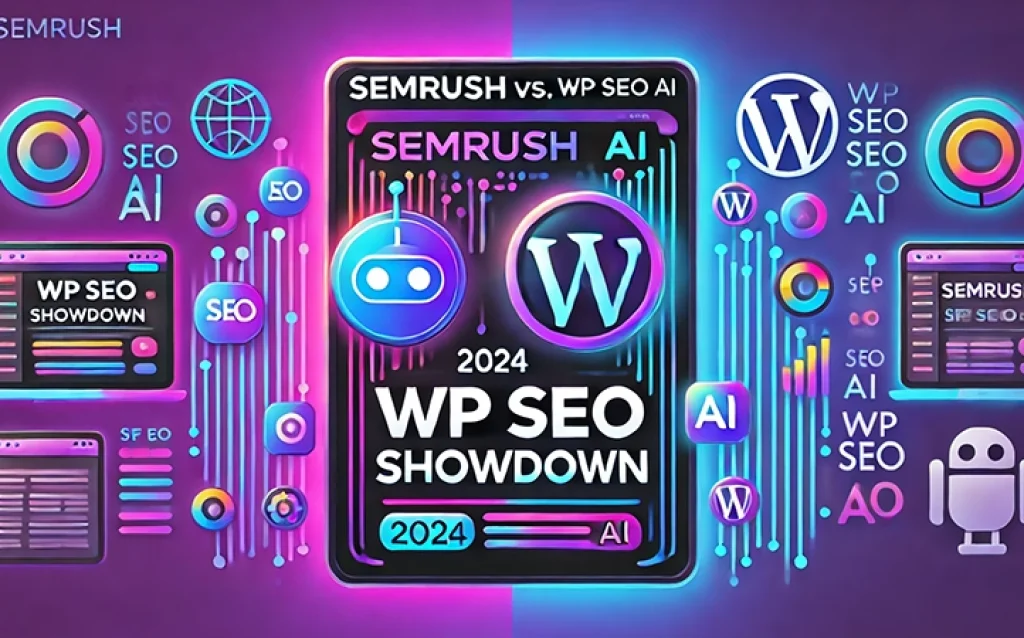Did you know that SEO is not just one thing? It’s actually divided into three main categories: on-page SEO, off-page SEO, and technical SEO. Let’s dive into two critical aspects and see how they differ, and more importantly, how OnPage and OffPage SEO can work together to boost your website’s visibility in search engine rankings.
Understanding On-page SEO: The Foundation of Search Success
On-page SEO refers to the optimization techniques you apply directly on your website. Think of it as the internal workings of your site that make it more attractive to search engines. This includes everything from the content you create to the HTML source code that forms the backbone of your digital presence.
When search engines like Google crawl your website, they’re looking for specific signals that help them understand what your content is about and how valuable it might be to users. These signals come directly from the elements you control on your own pages, which is why mastering on-page SEO is essential for establishing a strong foundation for your overall search strategy.
Key elements of on-page SEO include keyword optimization, meta tags, header tags, and internal linking. By focusing on these elements, you can ensure that your website is easily understandable by search engines, which can lead to higher rankings. For a deeper dive into how AI can assist with these tasks, check out our article on What is AI Writing and How Does It Work?.
Key Components of Effective On-Page SEO
- Keyword Research & Implementation: Identifying the terms your target audience is searching for and strategically placing them throughout your content
- Content Quality & Structure: Creating valuable, well-organized content that answers user questions
- Title Tags & Meta Descriptions: Crafting compelling, keyword-rich summaries that encourage clicks from search results
- URL Structure: Developing clean, descriptive URLs that both users and search engines can easily understand
- Image Optimization: Using descriptive filenames and alt text to help search engines understand visual content
- Internal Linking: Creating a logical pathway through your site that distributes authority and helps users navigate
The Role of Content in On-page SEO: Why Quality Matters More Than Ever
Content is king when it comes to on-page SEO. High-quality, relevant content not only engages your audience but also helps search engines understand what your site is about. This is where keyword research comes into play. By identifying the right keywords and incorporating them naturally into your content, you can improve your chances of ranking higher for the queries that matter most to your business.
But it’s not just about stuffing keywords. Search engines are increasingly sophisticated; they look for content that provides genuine value to users. This means your content should be informative, well-structured, and free of grammatical errors. Modern search algorithms can assess content quality based on factors like depth, relevance, readability, and user engagement signals.
Creating truly effective content requires understanding your audience’s needs and addressing them comprehensively. This often means going beyond basic information to provide insights, examples, and actionable advice that users can’t find elsewhere. Remember that search engines aim to deliver the best possible answer to a user’s query—so your goal should be to create content that deserves to be that answer.
For tips on creating effective content clusters that boost your topical authority, you might find our guide on How to Create a Content Cluster useful. Content clusters help establish your site as an authoritative resource on particular topics, which can significantly enhance your search visibility.
Content Optimization Best Practices
When developing content for on-page SEO, consider these proven strategies:
- Create comprehensive, in-depth content that covers topics thoroughly
- Structure content with clear headings (H1, H2, H3) that incorporate relevant keywords
- Use bulleted and numbered lists to improve readability and scannability
- Incorporate relevant multimedia elements like images, videos, and infographics
- Update content regularly to ensure it remains accurate and relevant
- Address common questions your audience is asking about the topic
Technical Aspects of On-page SEO: Behind-the-Scenes Optimization
Beyond content, there are several technical aspects to consider for on-page SEO. These include optimizing your site’s speed, ensuring mobile-friendliness, and using clean, efficient code. Search engines favor websites that load quickly and provide a good user experience across all devices, as these factors directly impact how users interact with your content.
Site speed has become increasingly important as a ranking factor. Users typically abandon sites that take more than a few seconds to load, and search engines recognize this behavior pattern. Optimizing images, leveraging browser caching, minimizing code, and using content delivery networks (CDNs) are all effective ways to improve loading times.
Mobile optimization is no longer optional—it’s essential. With mobile-first indexing, Google primarily uses the mobile version of your site for ranking and indexing. This means your site must not only be responsive but also provide a seamless experience specifically designed for mobile users.
Another critical factor is the use of meta tags and header tags. Meta tags provide search engines with a summary of your page’s content, while header tags help organize your content, making it easier for both users and search engines to navigate. Structured data markup (schema) can also enhance your search listings by providing rich snippets that stand out in search results.
For more on technical SEO, our article on Implementing Rich Snippets Effectively offers some valuable insights into how structured data can improve your search visibility.
Technical SEO Checklist
Ensure your website meets these technical requirements for optimal on-page SEO:
- Secure website with HTTPS protocol
- Mobile-responsive design that works seamlessly across all devices
- Fast page loading speed (aim for under 3 seconds)
- Proper implementation of robots.txt and XML sitemaps
- No duplicate content issues
- Clean URL structure with descriptive slugs
- Structured data markup where appropriate
- Minimal use of JavaScript for critical content
What Is Off-page SEO? Building Authority Beyond Your Website
While on-page SEO focuses on elements within your website, off-page SEO is all about building your site’s reputation and authority through external means. This includes activities like link building, social media marketing, brand mentions, and influencer outreach. Think of off-page SEO as the digital equivalent of word-of-mouth marketing—it’s how the rest of the internet talks about and references your site.
Off-page SEO is essentially about getting other websites to vouch for your content. When reputable sites link back to your content, it signals to search engines that your site is trustworthy and valuable. These external signals carry significant weight in search algorithms because they’re harder to manipulate than on-page elements, making them reliable indicators of content quality and relevance.
The concept behind off-page SEO stems from the academic principle of citation—just as scholarly papers gain credibility when cited by other respected papers, websites gain authority when linked to by other authoritative sites. This “vote of confidence” system remains central to how search engines determine which content deserves to rank highest.
Curious about how automation can help with these off-page tasks? Our article on How to Use Python for SEO Automation might be just what you need to scale your off-page efforts efficiently.
The Importance of Backlinks: Quality Over Quantity
Backlinks are the backbone of off-page SEO. These are links from other websites that point back to your site. The more high-quality backlinks you have, the more authoritative your site appears to search engines. However, not all backlinks are created equal. Links from reputable, high-authority sites in your industry carry significantly more weight than those from lesser-known sites or those unrelated to your field.
The evolution of search algorithms has shifted the focus from simple link counting to sophisticated analysis of link quality. A single backlink from a trusted, relevant site can be worth more than dozens of links from low-quality or spammy sources. In fact, poor-quality backlinks can actually harm your rankings if search engines interpret them as attempts to manipulate the system.
Building a strong backlink profile requires a strategic approach. This can involve creating highly shareable content that naturally attracts links, guest blogging on reputable sites, participating in industry discussions, and developing relationships with influencers and thought leaders in your field. The most effective backlinks often come from creating content so valuable that other sites naturally want to reference it.
Effective Backlink Building Strategies
Consider these proven approaches to earning quality backlinks:
- Create linkable assets – Develop unique research, comprehensive guides, or tools that others want to reference
- Broken link building – Find broken links on other sites and suggest your content as a replacement
- Strategic guest posting – Contribute valuable content to authoritative sites in your industry
- Digital PR campaigns – Create newsworthy content that journalists and bloggers want to cover
- Resource page link building – Get your site included on curated resource lists in your niche
- Relationship-based link building – Develop genuine connections with others in your industry
For a balanced perspective on using AI in content creation that can help generate linkable assets, you might want to read our article on AI Writing Tool vs Human Writer: Pros and Cons.
Social Signals and Off-page SEO: The Indirect Influence
Social media also plays a significant role in off-page SEO. While social signals (likes, shares, comments) may not directly impact your search rankings as confirmed by Google, they can drive traffic to your site and increase your content’s visibility. The more your content is shared and discussed on social media, the more likely it is to attract natural backlinks from people who discover it through these platforms.
Social media presence helps build brand awareness and credibility, which can indirectly impact search performance. When users are familiar with your brand from social media, they’re more likely to click on your site when it appears in search results, potentially improving your click-through rates—a factor that can influence rankings over time.
Additionally, social profiles often appear in search results for brand queries, allowing you to control more of the search landscape for your brand terms. This expanded search presence can be particularly valuable for reputation management and brand building.
Engaging with your audience on social media platforms can also help build your brand’s authority and trustworthiness. This, in turn, can lead to more organic backlinks and improved search rankings as people become more familiar with and confident in your expertise. Remember that social media should be approached as a channel for genuine engagement rather than simply a platform for link distribution.
Leveraging Social Media for Off-Page SEO
Implement these strategies to maximize the SEO benefits of your social media presence:
- Create shareable content formats that resonate with your social audience
- Build relationships with influencers and thought leaders in your industry
- Participate in relevant conversations and provide value to communities
- Optimize social profiles with keywords and complete information
- Share your content across multiple platforms with platform-specific formatting
- Encourage engagement through questions, polls, and interactive content
Combining On-page and Off-page SEO: The Synergistic Approach
While on-page and off-page SEO are distinct, they are most effective when used together as part of a comprehensive strategy. On-page SEO lays the foundation by making your site search-engine-friendly, while off-page SEO builds your site’s authority and reputation in the wider digital ecosystem. Think of it as a two-pronged approach: on-page SEO ensures your site is optimized for search engines, and off-page SEO ensures that other sites recognize and vouch for your content.
These two aspects of SEO work in a complementary fashion. Even the best off-page strategy will struggle to deliver results if your on-page elements are lacking. Similarly, perfect on-page optimization has limited potential without the external validation that comes from off-page factors. The most successful SEO strategies address both sides of this equation.
A practical approach is to start with solid on-page optimization, ensuring your content is valuable, relevant, and technically sound. Once that foundation is in place, you can focus on off-page strategies to amplify your content’s reach and build its authority. As your off-page efforts generate more traffic, you can analyze user behavior to further refine your on-page elements, creating a virtuous cycle of continuous improvement.
By combining these two strategies, you can create a comprehensive SEO plan that covers all bases. This holistic approach can lead to better search rankings, increased traffic, and ultimately, more conversions. For a deeper understanding of how to integrate these strategies through content organization, our article on How to Create a Content Cluster provides some valuable insights.
Measuring the Success of Your SEO Efforts: Data-Driven Optimization
It’s essential to track the performance of your SEO efforts to understand what’s working and what needs improvement. Without measurement, optimization becomes guesswork. Tools like Google Analytics and Google Search Console can provide valuable insights into your site’s performance, including traffic sources, user behavior, and keyword rankings.
When evaluating your SEO performance, focus on metrics that align with your business objectives rather than vanity metrics. For most sites, this means tracking not just rankings and traffic, but also engagement metrics like bounce rate, time on site, and pages per session, as well as conversion metrics that reflect business impact.
Establish a regular cadence for SEO reporting and analysis. Monthly reviews are common, but you might want more frequent checks during active campaigns or after significant site changes. Look for trends over time rather than daily fluctuations, as search rankings naturally vary.
Key SEO Metrics to Track
For comprehensive SEO measurement, monitor these important indicators:
- Organic traffic: Total visitors coming from search engines
- Keyword rankings: Positions for target keywords and phrases
- Organic conversion rate: Percentage of search visitors who complete desired actions
- Backlink profile: Number, quality, and diversity of sites linking to you
- Page load speed: How quickly your pages load on various devices
- Click-through rate (CTR): Percentage of impressions that result in clicks
- Bounce rate: Percentage of single-page sessions
- Core Web Vitals: Google’s metrics for page experience
Regularly monitoring these metrics can help you make data-driven decisions and adjust your strategies as needed. For more advanced tracking and analysis, our article on How to Use Python for SEO Automation offers some practical tips for scaling your analytics capabilities.
Common Mistakes to Avoid: Pitfalls That Can Harm Your Rankings
While SEO can be incredibly effective, it’s also easy to make mistakes that can hurt your rankings. Common pitfalls include keyword stuffing, using low-quality backlinks, and neglecting mobile optimization. These mistakes can lead to penalties from search engines, which can be challenging to recover from and may require significant time and resources to address.
One frequent mistake is focusing too heavily on search engines rather than users. Remember that search algorithms are increasingly designed to reward content that provides the best user experience. Trying to “trick” search engines with tactics like hidden text, excessive keyword use, or purchased links is likely to backfire in the long run.
Another common error is neglecting technical SEO issues like slow page speeds, broken links, or crawl errors. These technical problems can prevent search engines from properly accessing and understanding your content, undermining even the best content strategies.
SEO Pitfalls to Avoid
Be vigilant about these common SEO mistakes:
- Keyword stuffing or using irrelevant keywords
- Ignoring mobile usability and responsiveness
- Using duplicate content across multiple pages
- Purchasing links or participating in link schemes
- Neglecting title tags and meta descriptions
- Overlooking image optimization opportunities
- Creating thin content with little value
- Ignoring crawl errors and technical issues
- Using intrusive interstitials that harm user experience
To avoid these issues, it’s crucial to stay updated on SEO best practices and continuously refine your strategies. For a balanced perspective on the pros and cons of different content creation approaches that can impact your SEO, you might find our article on AI Writing Tool vs Human Writer: Pros and Cons useful.
Future Trends in SEO: Staying Ahead of the Curve
The world of SEO is constantly evolving, with search engines regularly updating their algorithms and introducing new ranking factors. Staying informed about emerging trends can help you adapt your strategy proactively rather than reactively.
Some key trends to watch include the growing importance of user experience signals, the rise of voice search optimization, the increasing sophistication of AI in search algorithms, and the continued emphasis on E-E-A-T (Experience, Expertise, Authoritativeness, and Trustworthiness) as a quality indicator.
As search becomes more intuitive and conversational, focusing on topics rather than just keywords will become increasingly important. Creating content that thoroughly answers user questions and provides comprehensive coverage of topics will likely be more effective than targeting specific keyword phrases.
Additionally, the integration of SEO with other marketing channels will continue to grow in importance. The lines between SEO, content marketing, social media, and public relations are blurring, creating opportunities for integrated strategies that leverage multiple channels for maximum impact.
Conclusion: Building a Balanced SEO Strategy
In the ever-evolving world of SEO, understanding the differences and relationships between on-page and off-page SEO is crucial for search success. Both play vital roles in improving your site’s visibility and search rankings. On-page elements form the foundation of your SEO efforts by ensuring your content is relevant and accessible, while off-page factors build the authority and credibility that help you stand out in competitive search results.
The most effective SEO strategies take a holistic approach, addressing both on-page and off-page factors as part of an integrated plan. By focusing on creating high-quality, user-focused content and building a strong, natural backlink profile, you can achieve a well-rounded SEO strategy that drives sustainable results.
Remember that SEO is a long-term investment rather than a quick fix. Consistent effort, regular measurement, and ongoing optimization are essential for building and maintaining search visibility. As search algorithms continue to evolve, focusing on providing genuine value to users will remain the most reliable approach to SEO success.
Ready to take your SEO to the next level? Explore our resources and tools to help you optimize your site effectively. Whether you’re just starting or looking to refine your existing strategies, we’re here to help you succeed in the competitive world of search. Feel free to share this article, contact us for more information, or dive into our other insightful articles to continue your SEO journey.






